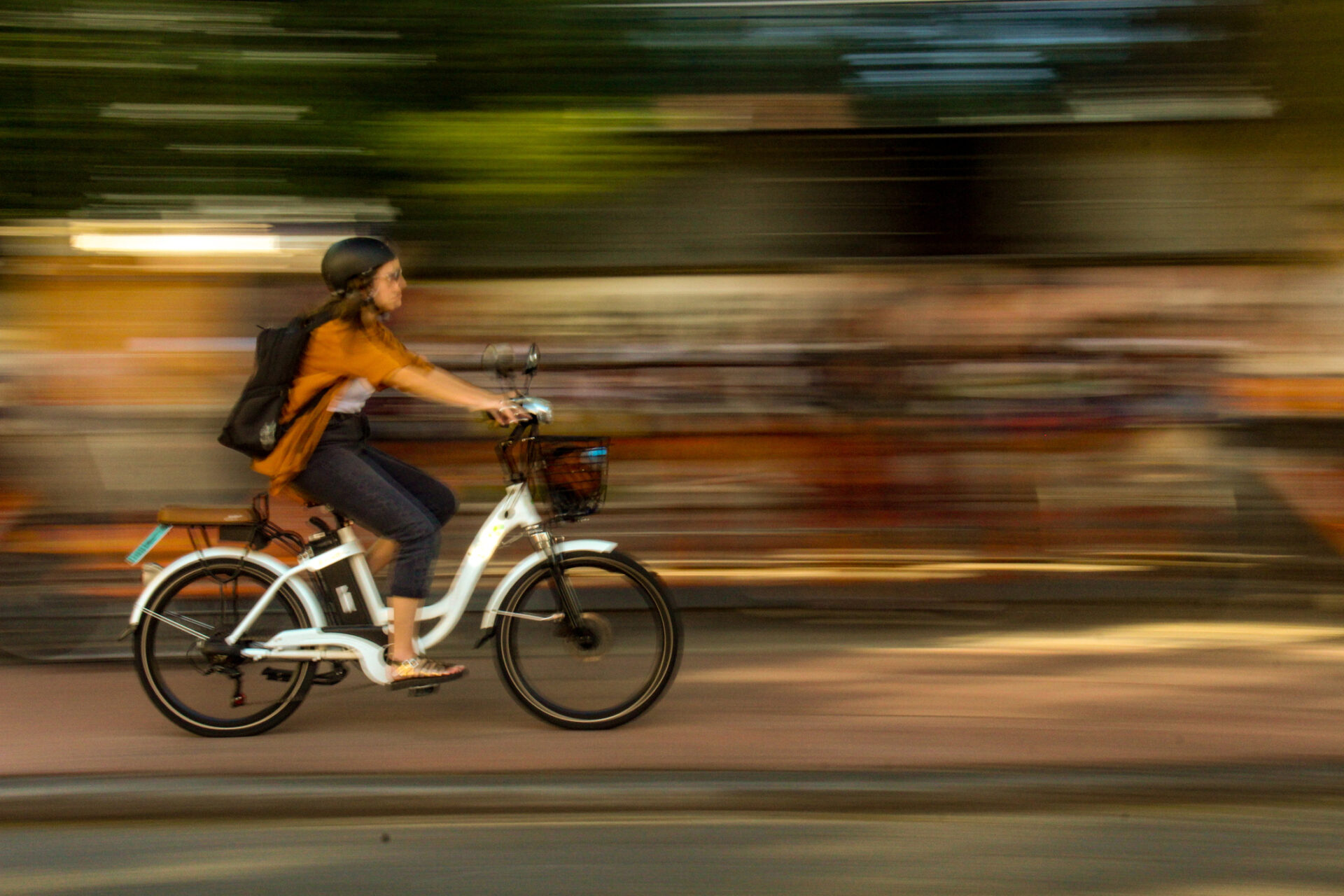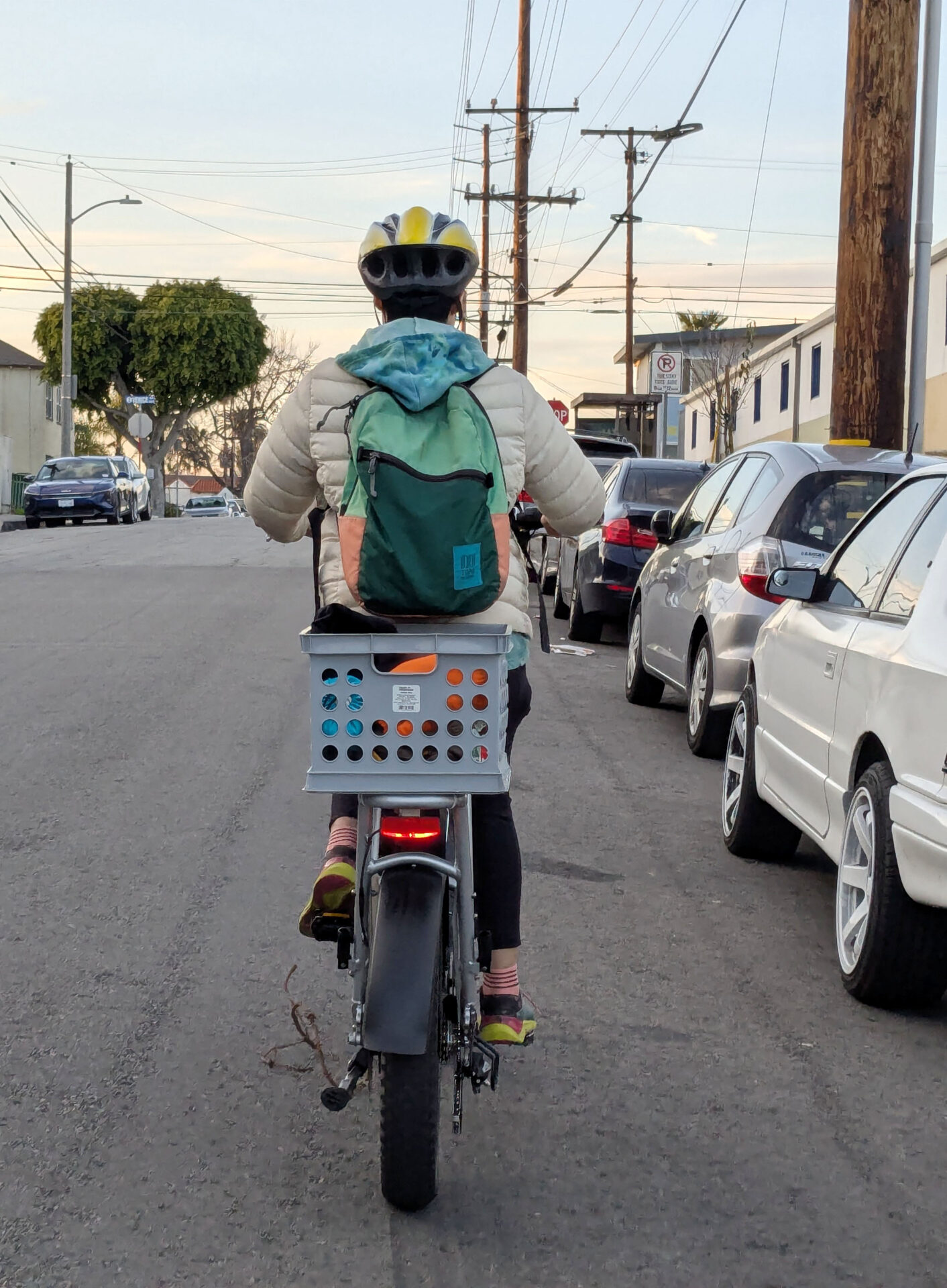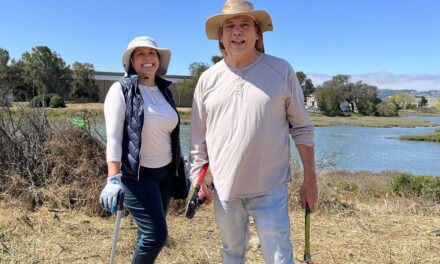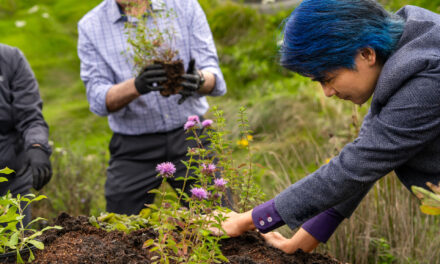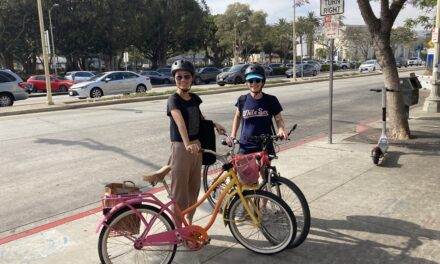In a Climate Disaster, Your Car Won’t Save You
On January 9, two days after the wildfires hit Los Angeles, my phone blared with an evacuation warning. It didn’t make sense — we were separated from the nearest fire in the Palisades by miles of asphalt — but I started packing a bag, just in case. The notice turned out to be a mistake, sent out to every resident in LA County.
For a week, while the fires raged, I was in a constant state of fight-or-flight. Flight — how would I flee a wildfire if the warning were real? As much as I love and appreciate my rent-controlled apartment, I’m not staying behind with two fire extinguishers and one fire blanket to try to save it.
Last year, I bought a used e-bike from a guy in a local biking Facebook group, so I pictured myself getting on my bike and taking off, but didn’t get much further in my imaginary journey. Where would I go? My instinct told me I would probably head to the ocean, taking the Ballona Creek Bike Path, a trip I’ve made dozens of times alone or with friends. I would head south, away from the flames.
When I told my friend this, she said of course I would go with her if we had to evacuate. She has a car. But as we learned during these fires, a car can be a liability — can trap you in the worst traffic jam of your life as the flames draw ever nearer.
Transportation and urbanism journalists (including me) have fixated on that scene at the intersection of Sunset Boulevard and Palisades Drive — people abandoning their cars and fleeing on foot. When thousands of people try to evacuate by car at the same time via one of the only ways out, what you end up with is gridlock.
In 2019, I got rid of my car, which I was mostly driving from one side of the street to the other to escape parking tickets. I held onto it for years, even though I hated driving in LA. Why? Emergencies. I imagined that my friend who lived in Burbank (my furthest friend, geographically speaking, in the county) might need me. How would I reach her without a car?
In America, having a car means freedom — it means the open road, wind in your face, whipping through your hair. But in Los Angeles, where gridlock is often the norm, driving is hell. When I’m on my bike, I feel free. I feel alive. When I’m stuck in traffic, barely moving, I feel trapped — no matter how many podcasts or audiobooks I download.
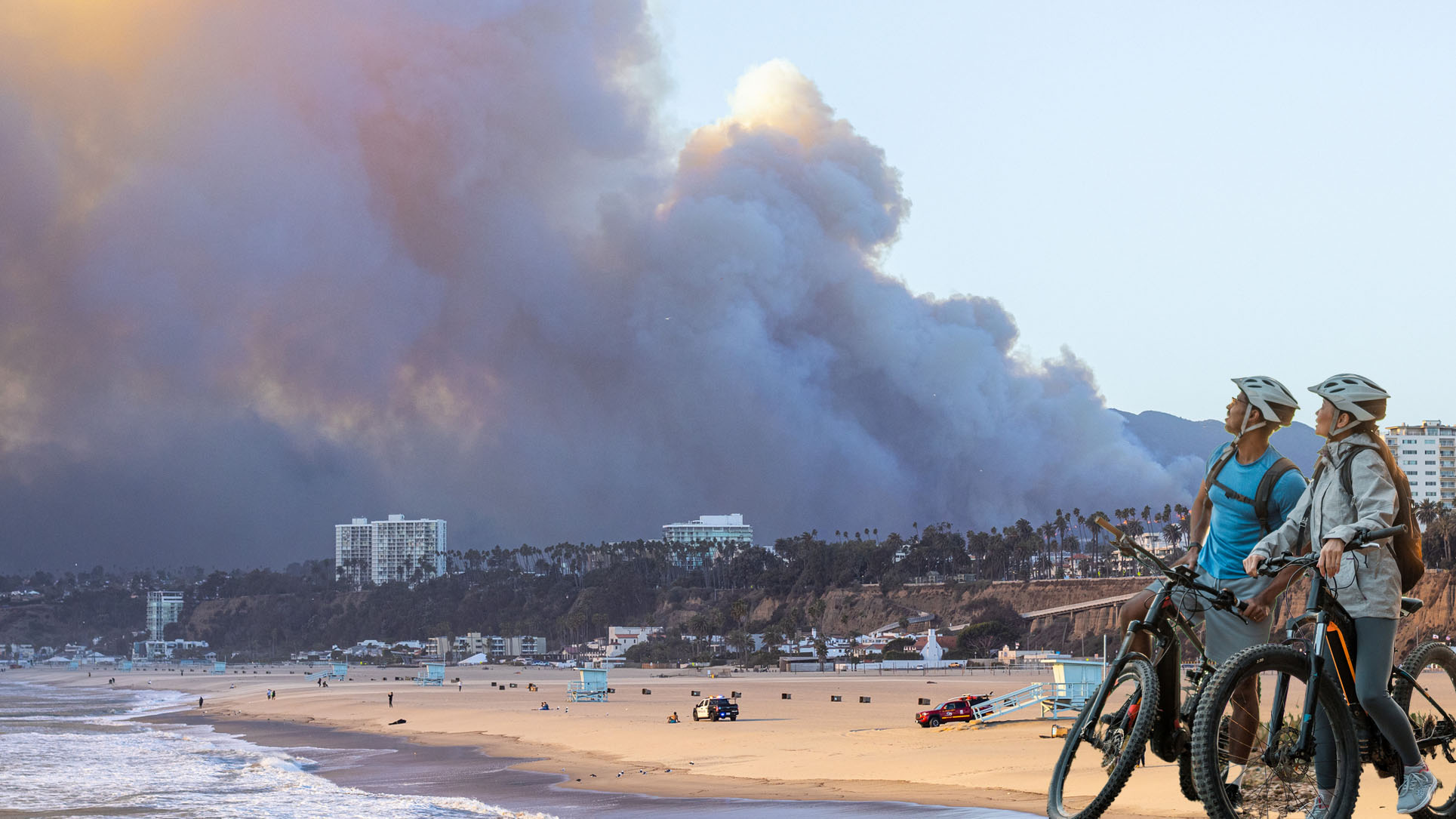
Photos: Azami & Ward DeWitt, I-Stock.
The imagery of evacuation gridlock was too perfect: cars trapping people in a climate disaster that cars, in part, created. I am no climate martyr. I bike and take the train because I want to. But everyone driving everywhere all the time is making our streets deadly and our air toxic, turning up the temperature on a warming planet.
I hear the same message every time I read about those abandoned cars — we can’t keep doing this. We can’t keep depending on cars to save us. We have to change. We have to adapt.
LA is built for cars, so as a pedestrian and cyclist you exist in the seams and the cracks (sometimes literal) of the system. It’s two-fold: you feel like you are not meant to be there, and drivers will also treat you as if you shouldn’t be there. But also, you can navigate spaces that cars can’t, squeezing between and around vehicles. Cars can kill you, but they can’t box you in.
When I picture evacuating on my e-bike, cars are in the way, but I go around them. I’m wearing the P100 respirator I bought during the wildfires. Maybe I am carrying someone on the backseat. We move slowly but surely around stopped traffic till we reach the open road.
Other Recent Posts
Assistant Editor Job Announcement
Part time freelance job opening with Bay Area climate resilience magazine.
Training 18 New Community Leaders in a Resilience Hot Spot
A June 7 event minted 18 new community leaders now better-equipped to care for Suisun City and Fairfield through pollution, heat, smoke, and high water.
Mayor Pushes Suisun City To Do Better
Mayor Alma Hernandez has devoted herself to preparing her community for a warming world.
The Path to a Just Transition for Benicia’s Refinery Workers
As Valero prepares to shutter its Benicia oil refinery, 400 jobs hang in the balance. Can California ensure a just transition for fossil fuel workers?
Ecologist Finds Art in Restoring Levees
In Sacramento, an artist-ecologist brings California’s native species to life – through art, and through fish-friendly levee restoration.
New Metrics on Hybrid Gray-Green Levees
UC Santa Cruz research project investigates how horizontal “living levees” can cut flood risk.
Community Editor Job Announcement
Part time freelance job opening with Bay Area climate resilience magazine.
Owning a car in LA is a class issue. Riding the train home from a transportation conference that inevitably turns to the topic of the fires, I see people commuting home with their bikes and marvel at the ingenuity of one man who has strapped a large bundle of recyclables to his bike without issue, while I cannot balance a single bag of groceries on my handlebars without busting open a quart of milk on the way home.
In the next few months, researchers at UCLA will be studying evacuation strategies for transit riders and non-drivers. These are often members of vulnerable populations, as the project descriptions note. But do you know how fucking tenacious you have to be to ride a bike or walk or take transit in LA as your primary mode of transporation?
People are surviving in the gaps every single day, in a city that barely acknowledges that they exist.
During these fires, people who own multi-million dollar homes were grabbing whatever they could carry, ditching their Teslas and BMWs, and fleeing on foot. Vulnerable, who?
What if in a climate crisis we could leave our cars behind? A bunch of cars on the road is congestion. A bunch of bikes is more like a fun party with strangers and friends.
I picture an alternative future: thousands of e-bikes flooding Palisades Drive during an evacuation — masks and goggles protecting lungs and eyes from toxic smoke; precious family albums lashed to the rear rack, a guitar from high school slung crossbody — and I laugh. It’s not funny. But something about it feels like resilience, even adventure.






